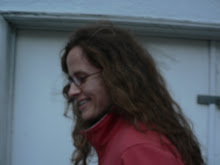The 400 Blows (Francois Truffaut)
Funny Games, 1997 version (Michael Henake)
High Fidelity (Stephen Frears)
Jules and Jim (Francois Truffaut)
Some Like It Hot (Billy Wilder)
Children of Men (Alfonso Cuaron)
Ferris Beuller's Day Off (John Hughes)
The Conformist (Bernardo Bertolucci)
The Blair Witch Project (Daniel Myrick & Eduardo Sanchez)
Buffy the Vampire Slayer: "Once More With Feeling" (Joss Whedon)
Twin Peaks, a few scenes featuring Bob (David Lynch)
smatterings of commercials, news programs
Course Objectives:
What does it mean when a fictitious character looks at a real camera. Is it the same thing as looking at you. Who are you and why are you watching these films. Do you feel as though you're part of the conversation, part of the creation, part of the story. Are you implicated and by what. What's wrong with you and what's wrong with the world. Are you a thoughtless voyeur when you don't acknowledge the camera. How many times does one director get to use this technique. Is it funny for an actor to look into the camera. Why would a filmmaker find it necessary to address the action. Where is the beginning and end of fiction, of fantasy. Who controls the story. Is this technique stronger when it ends a film. Why do people in commercials talk like that; don't they know that no one speaks to me in that manner. Like a baby. Like an idiot. Why do newscasters speak with their eyebrows. Does blood splattering on the camera count as acknowledgement. Name a film to use as contrast.
















